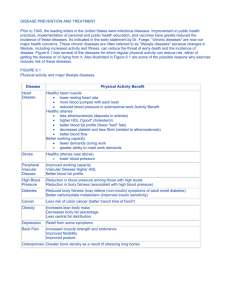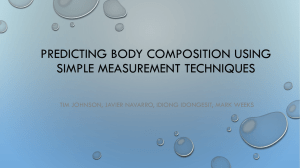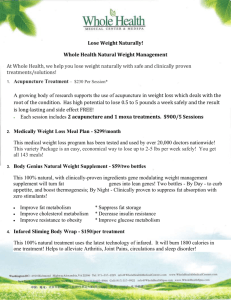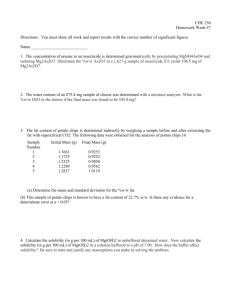exercise training reduces hepatic fat in type 2 diabetes
advertisement
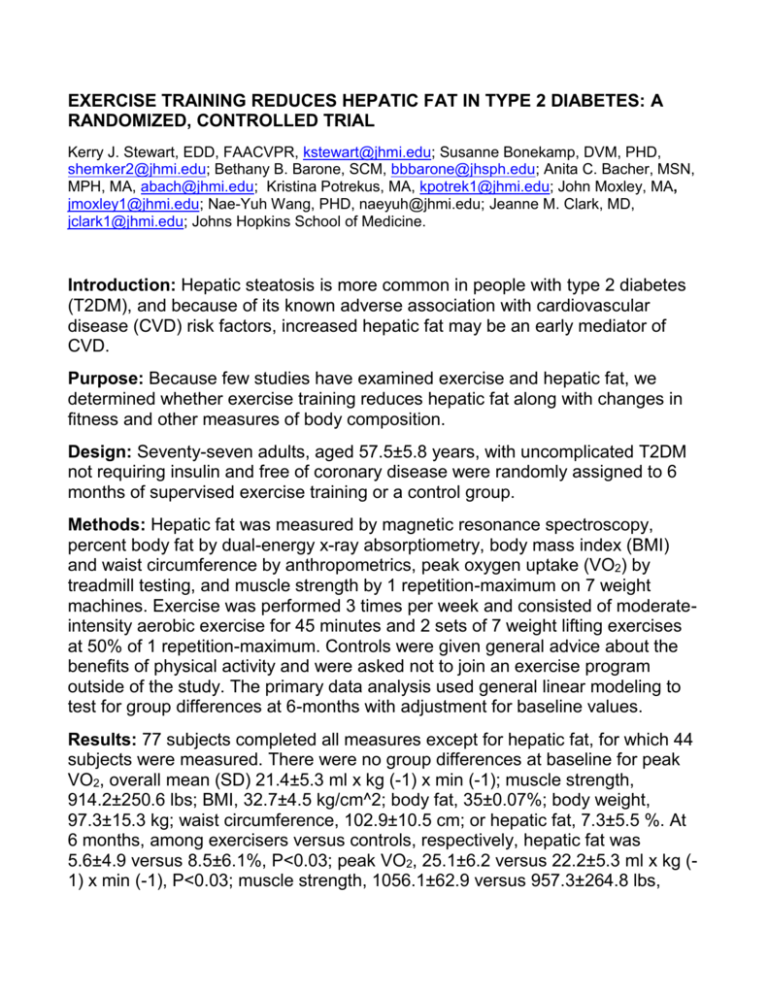
EXERCISE TRAINING REDUCES HEPATIC FAT IN TYPE 2 DIABETES: A RANDOMIZED, CONTROLLED TRIAL Kerry J. Stewart, EDD, FAACVPR, kstewart@jhmi.edu; Susanne Bonekamp, DVM, PHD, shemker2@jhmi.edu; Bethany B. Barone, SCM, bbbarone@jhsph.edu; Anita C. Bacher, MSN, MPH, MA, abach@jhmi.edu; Kristina Potrekus, MA, kpotrek1@jhmi.edu; John Moxley, MA, jmoxley1@jhmi.edu; Nae-Yuh Wang, PHD, naeyuh@jhmi.edu; Jeanne M. Clark, MD, jclark1@jhmi.edu; Johns Hopkins School of Medicine. Introduction: Hepatic steatosis is more common in people with type 2 diabetes (T2DM), and because of its known adverse association with cardiovascular disease (CVD) risk factors, increased hepatic fat may be an early mediator of CVD. Purpose: Because few studies have examined exercise and hepatic fat, we determined whether exercise training reduces hepatic fat along with changes in fitness and other measures of body composition. Design: Seventy-seven adults, aged 57.5±5.8 years, with uncomplicated T2DM not requiring insulin and free of coronary disease were randomly assigned to 6 months of supervised exercise training or a control group. Methods: Hepatic fat was measured by magnetic resonance spectroscopy, percent body fat by dual-energy x-ray absorptiometry, body mass index (BMI) and waist circumference by anthropometrics, peak oxygen uptake (VO2) by treadmill testing, and muscle strength by 1 repetition-maximum on 7 weight machines. Exercise was performed 3 times per week and consisted of moderateintensity aerobic exercise for 45 minutes and 2 sets of 7 weight lifting exercises at 50% of 1 repetition-maximum. Controls were given general advice about the benefits of physical activity and were asked not to join an exercise program outside of the study. The primary data analysis used general linear modeling to test for group differences at 6-months with adjustment for baseline values. Results: 77 subjects completed all measures except for hepatic fat, for which 44 subjects were measured. There were no group differences at baseline for peak VO2, overall mean (SD) 21.4±5.3 ml x kg (-1) x min (-1); muscle strength, 914.2±250.6 lbs; BMI, 32.7±4.5 kg/cm^2; body fat, 35±0.07%; body weight, 97.3±15.3 kg; waist circumference, 102.9±10.5 cm; or hepatic fat, 7.3±5.5 %. At 6 months, among exercisers versus controls, respectively, hepatic fat was 5.6±4.9 versus 8.5±6.1%, P<0.03; peak VO2, 25.1±6.2 versus 22.2±5.3 ml x kg (1) x min (-1), P<0.03; muscle strength, 1056.1±62.9 versus 957.3±264.8 lbs, P<0.001; % body fat, 33.2±0.07 versus 35.5±0.06 %, P<0.001, body weight, 92.2±16.6 versus 98.5±14.5 kg, P<0.01; and waist circumference, 99.1±11.9 versus 103.4±10.5, P<0.001. BMI was not significantly different among groups at 6 months. Conclusions: Besides the expected exercise-induced improvements in fitness and general and central obesity, a novel finding from this randomized study was a reduction in hepatic fat. This may indicate an important mechanism by which exercise training improves metabolic and CV health in persons with T2DM.




